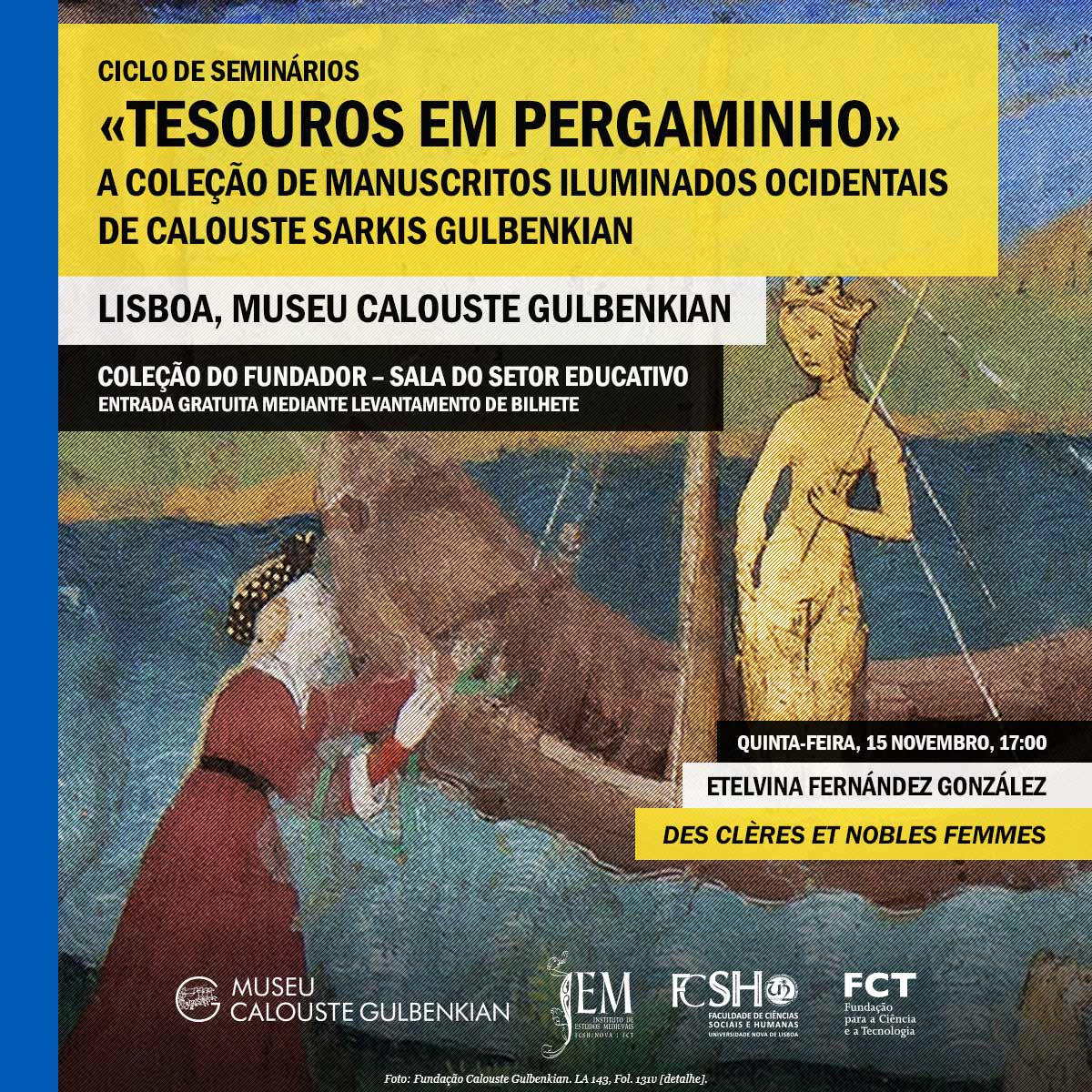Series of seminars «Tesouros em pergaminho»: Des Clères et Nobles Femmes
15.11.2018
Founder's Collection - Education Sector Room
Calouste Gulbenkian Museum, Lisbon

Speaker: Etelvina Fernández González
In the context of present-day Europe, in which women increasingly occupy a leading role in various fields – such as science, art, literary and political activities -, having achieved progressive levels of independence at all levels, the example of Cristina de Pisano anticipates this situation by several centuries. In this sense, it becomes useful to analyse the past in order to better understand the present. Her figure is undoubtedly an extraordinarily relevant example of the role that women have assumed and are assuming today in society.
Cristina de Pisano was born in Venice in 1364 and died in Poissy, near Paris, in 1430. She grew up in a cultured family and was educated in the intellectual and refined atmosphere of the Valois court. She learned Italian and French and could read Latin. She devoted herself to intellectual life, to writing, and was the first woman in France to make a living from this activity. Indeed, it was her writing that brought her to fame.
She wrote The City of Ladies between December 1404 and April of the following year. This is a complex “women’s history”, set out in defence of the female gender, and is the author’s best known work, perhaps because of its content and the time of its publication. From analysis, this book can clearly be understood as an argument in favour of women and against the misogyny prevailing in the intellectual environments of the late Middle Ages. It is also essential to bear in mind that this work drew on ancient sources and contemporary writings as its influences, conveying them both in the written text and in the illuminations of its manuscripts, an image of its creator as a cultured and intelligent woman who attributed great value to the world of arts
This event takes place in the framework of the seminar cycle «Tesouros em Pergaminho – A coleção de manuscritos iluminados ocidentais de Calouste Sarkis Gulbenkian» (Treasures in Parchment – The Western Illuminated Manuscript Collection of Calouste Sarkis Gulbenkian), resulting from a partnership between Calouste Gulbenkian Museum and the Institute of Medieval Studies (IEM) of the School of Social Sciences and Humanities, NOVA University (NOVA FCSH).
